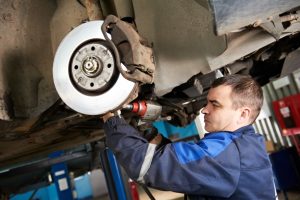Often, we feel that technology is changing too fast. Today, it’s fairly common to have virtual assistants such as Siri from Apple and Alexa from Amazon. They’re powered solely by artificial intelligence. We even have smartphones that we can unlock with just a glance at it.
We’re living in the age of the digital revolution. But it’s always good to know what came before that–the First Industrial Revolution. These are the technologies that brought about the technologies we know and love now.

What is the Industrial Revolution
The Industrial Revolution (1750 to 1900) changed the way we made things. Before that, everything was done with our hands. Handcrafted goods had a certain appeal, especially because they seem more personalized and detailed. But the mass production of goods changed the world. It catered to more people. This was brought upon by the development of machinery and the creation of factories.
Economies and the way people lived their lives were transformed. The automobile industry came to life with the development of machines. Thus, goods and services were delivered in a much faster manner. People became more mobile as well. They flocked to urban areas where they built up an on-the-go lifestyle driven by productivity and efficiency.
The Industrial Revolution paved the way for the technologies that we know now. So here are some innovations that came from that era:
Assembly Line
Factories started popping up in various places across the world. And they mainly operated on one very effective system: the assembly line. It started with Henry Ford in 1913. He was at the forefront of the early stages of the automobile industry. And he installed the first assembly line to mass-produce entire cars.
Ford’s Model T car transformed the way people traveled. It’s because it’s the first car that was deliberately made available for the masses. The assembly line model transformed other industries such as the meat-processing and textile. It also led to new jobs that supported the masses. Because there are more machines constantly used, people were needed to repair pumps and other machinery.
Pneumonic Tube
We’ve heard about how Elon Musk wants to change the way people travel with tubes. He envisioned the Hyperloop, which is a much faster way of traveling. People would ride inside a pod and speed through a tube. Musk imagined that people would get to travel up to 8,000 miles per hour.
But before Musk’s vision for the Hyperloop, there’s the pneumonic tube. Other inventors had dreamt about transporting people in a high-speed vehicle that moved inside tubes. But instead, the pneumonic tubes became more effective as a delivery system for small packages. They even created New York City’s underground mail system in 1897. It works like this: a canister that holds the package is inserted into a tube. Then a fan would turn on, making the air pressure control the canister’s movement until it reached its destination at another end of a tube.
Steam Engine
Machines powered by steam have been around for thousands of years, way before the Industrial Revolution. It goes back to as early as the first century A.D., with Hero, a Greek inventor. But it was James Watt in 1765 who truly changed the steam engine.
His improvements to it would go on to power trains, ships, and even cars. It changed the way we delivered goods to various areas around the world. It also encouraged people to be more adventurous and to travel more.
Morse Code and the Telegraph
These days, we’ve become so reliant on the internet and smartphones. They’re our means of staying updated about the world. They’re how we can stay connected with our loved ones despite the physical distance. But before there were Facebook, Twitter, and Zoom, there were Morse code and telegrams.
The telegraph first came about in the 1830s because of Samuel Morse. But more inventors after him improved the machine. People sent electrical signals through electrical wires. These signals were composed of dots and dashes that follow a certain pattern. This pattern made up the Morse code.
Knowing about these technologies could help us understand how we got the machines that we have right now. We use smartphones, laptops, and cars every single day. We couldn’t do our work, talk to our loved ones, and even do some errands without them. So it’s always good to know where these machines came from. Who knows? You might even find some inspiration and create new technologies that would further improve our ways of life.














